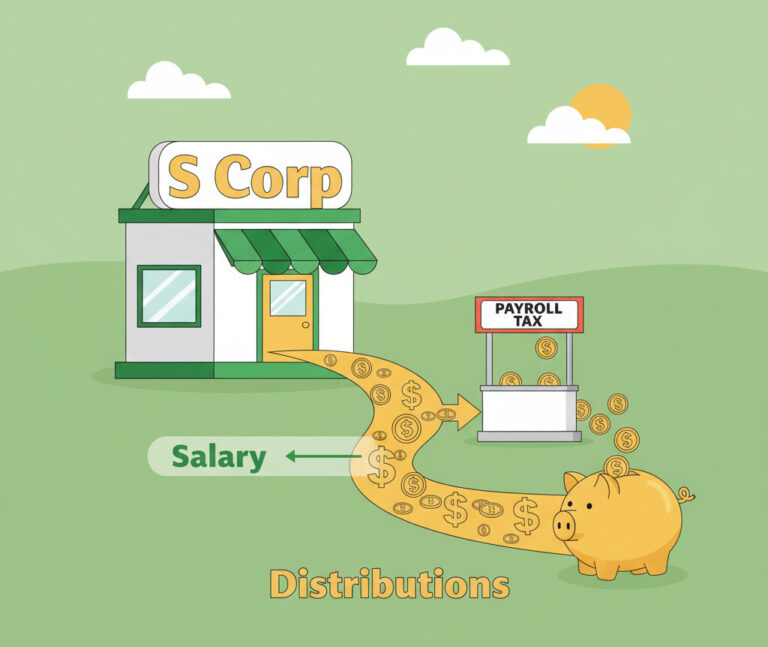Last Call : Work Opportunity Tax Credit (WOTC) ends in 2025
As a business owner, you’re always on the lookout for talented individuals to help your company grow. But let’s be honest, the hiring process can be costly and challenging. What if I told you there’s a federal program designed to ease that burden and actually reward you for making inclusive hiring decisions? It’s called the Work Opportunity Tax Credit, or WOTC, and it could be a game-changer for your bottom line. 😊
What Exactly is the WOTC? 🤔
The Work Opportunity Tax Credit is a Federal tax credit available to employers who hire and retain individuals from certain targeted groups who have consistently faced significant barriers to employment. The main goal is to incentivize businesses like yours to tap into a diverse talent pool while promoting a more inclusive workforce. It’s a true win-win: you get a valuable new employee and a reduction in your federal income tax liability.
This program is currently authorized for employees hired through December 31, 2025, so now is the perfect time to take advantage of it. The legal basis for this credit is found in Section 51 of the Internal Revenue Code.
The WOTC isn’t just for big corporations. Businesses of all sizes, and even certain tax-exempt organizations, can claim this credit. It directly reduces your tax bill, making it more valuable than a simple tax deduction.
Who Qualifies? Exploring the WOTC Targeted Groups 📊
To claim the credit, you need to hire an employee from at least one of the following targeted groups. The list is quite broad, so you might be surprised who qualifies!
- Qualified Veterans: This includes veterans who have been unemployed for a certain period, have a service-connected disability, or are receiving SNAP (food stamps).
- TANF Recipients: Individuals from families receiving benefits from the Temporary Assistance for Needy Families (TANF) program.
- SNAP Recipients: Qualified individuals between the ages of 18 and 39 who are members of a family that has received Supplemental Nutrition Assistance Program (SNAP) benefits.
- Formerly Incarcerated Individuals: Individuals hired within a year of being convicted of a felony or being released from prison.
- Designated Community Residents: Individuals aged 18-39 who live in a federally designated Empowerment Zone or Rural Renewal County.
- Vocational Rehabilitation Referrals: Individuals with a disability who have received services from a state vocational rehabilitation agency or the Department of Veterans Affairs.
- SSI Recipients: Individuals who have been receiving Supplemental Security Income (SSI) benefits.
- Long-Term Family Assistance Recipients: Members of a family that has received long-term family assistance.
- Long-Term Unemployment Recipients: Individuals who have been unemployed for at least 27 consecutive weeks.
- Summer Youth Employees: Youth aged 16-17 living in an Empowerment Zone, hired for summer employment.
You can’t claim the credit for hiring relatives. Also, the employee must be new to your company, not a rehire. Verification is key, which is why the application process is so important!
Calculating Your Tax Credit Savings 🧮
The amount of your tax credit depends on the employee’s qualified wages and the number of hours they work in their first year. Here’s the general breakdown:
| Hours Worked in First Year | Credit Percentage | Maximum Credit (General) |
|---|---|---|
| 120 to 399 hours | 25% of first $6,000 in wages | $1,500 |
| 400+ hours | 40% of first $6,000 in wages | $2,400 |
However, for certain groups, the savings can be even greater! For example, the wage limit for some qualified veterans can be as high as $24,000, leading to a maximum credit of $9,600. Similarly, for long-term family assistance recipients, the credit can extend over two years for a total of up to $9,000.
How to Apply: A Step-by-Step Guide 📝
Claiming the WOTC involves a two-step process. It’s crucial to follow the deadlines closely.
- Step 1: Pre-screening and Certification. Before you can claim the credit, you must get the employee certified. You must complete IRS Form 8850, Pre-Screening Notice and Certification Request, and submit it to your State Workforce Agency (SWA) within 28 days of the employee’s start date. This deadline is strictly enforced! The SWA will then verify the employee’s eligibility and issue a certification.
- Step 2: Calculate and Claim the Credit. Once you have the certification from the SWA, you can claim the credit on your business’s federal tax return. You’ll use Form 5884 (Work Opportunity Credit) to calculate your total credit amount. This amount is then reported on Form 3800 (General Business Credit).
For tax-exempt organizations, the rules are a bit different. You can only claim the WOTC for hiring qualified veterans. Instead of a credit against income tax, it’s claimed against the employer’s share of Social Security tax using Form 5884-C.
WOTC At-a-Glance
Frequently Asked Questions ❓
The Work Opportunity Tax Credit is a fantastic way to build a diverse team while getting a well-deserved financial break. It might seem a little complex at first, but with the right process, it’s very manageable. If you have any more questions, feel free to drop them in the comments below! Happy hiring! 😊







